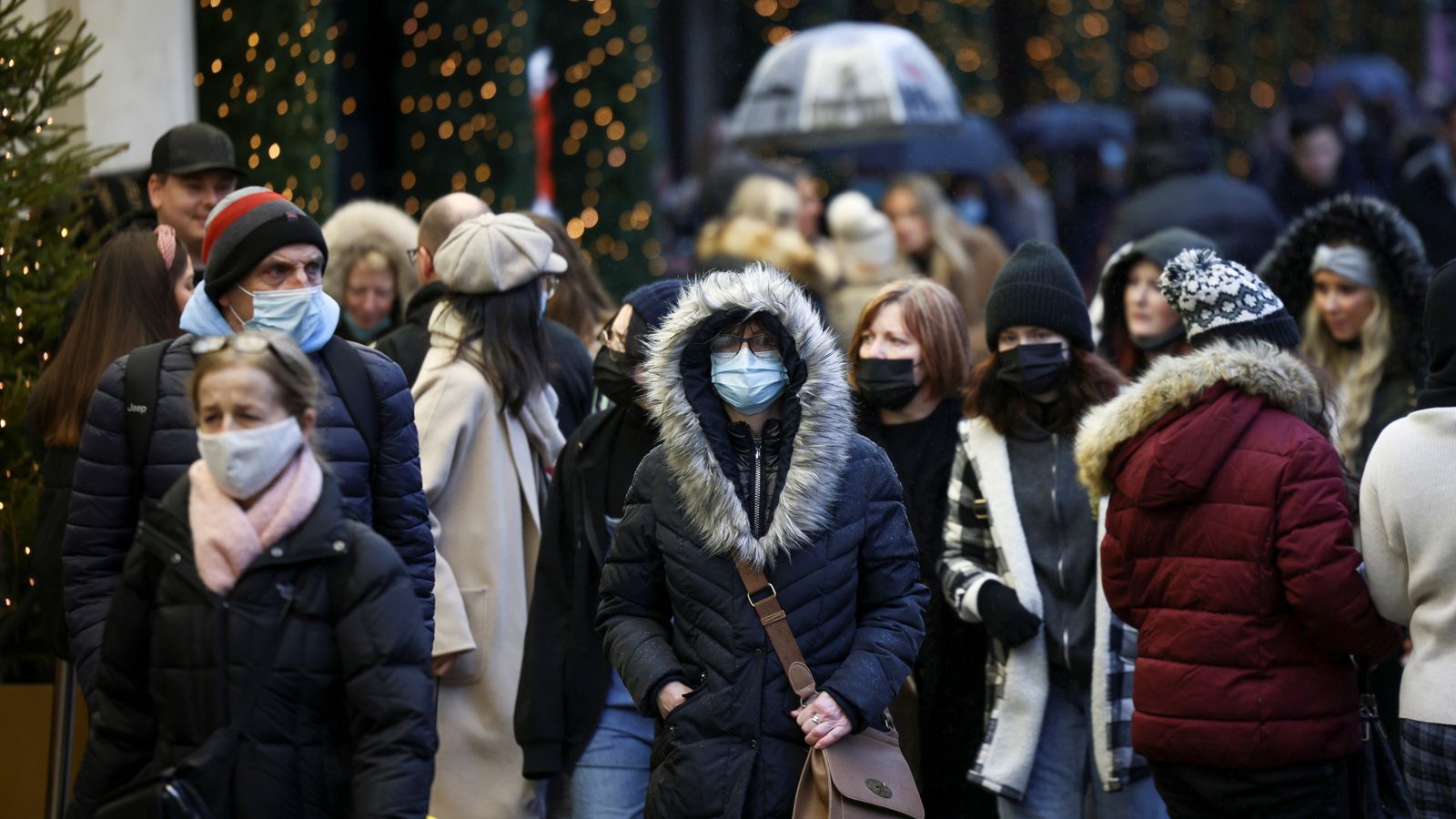A model is only as good as the assumptions you make.
That’s why scientists on the SAGE committee that advises the government have commissioned half a dozen academic groups to make predictions during this pandemic.
This team from the London School of Hygiene and Tropical Medicine is one of the expert groups, and highly respected. But it is only one model.
What ‘Plan C’ restrictions could we see if Plan B fails to curb the spread of Omicron?
Even they conclude there is a huge spectrum of possible outcomes for the coming fourth wave of COVID. There just isn’t enough known yet about Omicron’s ability to evade vaccines and cause serious disease.
In their most optimistic scenario the number of people being admitted to hospital would be 40% lower than at the peak of the January 2021 wave. But in their most pessimistic scenario they would be twice as high.
COVID: Another 633 Omicron cases found in the UK in biggest daily jump of the variant
COVID-19: Omicron could cause between 25,000 and 75,000 deaths in England without tougher restrictions – experts
COVID-19: Treasury admits staff had drinks during lockdown last year amid row over Downing Street parties
It’s a huge difference – because there’s so little hard data.
Some of the key numbers are beginning to come in – too late for this model though.
Preliminary real-world evidence from the UK Health Security Agency on Friday showed that Omicron dramatically blunts the effectiveness of two doses of the vaccine, particularly AstraZeneca. But the addition of a booster is likely to prevent symptomatic infection.
That helps us to start narrowing down which of the scenarios in this model is most likely.
The closest fit is one in which the variant has high “immune escape” because of its mutations, but the booster is also effective.
In that scenario there are likely to be around 318,000 hospital admissions and 47,100 deaths by the end of next April.
That’s still a huge number, but not as bad as it could have been.
The numbers could reduce as more data comes in and the model is refined.
A key assumption by the researchers is that Omicron causes symptoms that are as severe as Delta. That’s far from certain.
Doctors in South Africa report that patients are developing a much milder disease. Even those in hospital are far less likely to need oxygen this time round.
And there have yet to be any reports of deaths in Europe’s highly vaccinated population, despite the rapidly growing number of cases.
It may just be a matter of time. Omicron is spreading fastest in younger people who are least likely to develop serious COVID anyway.
So until the variant has reached more vulnerable groups we can’t be sure just how virulent it is. That could be another few weeks.
Follow the Daily podcast on Apple Podcasts, Google Podcasts, Spotify, Spreaker
Unfortunately we don’t have the luxury of time.
Case numbers are doubling every 2.5 days. It’s so quick that in the eight days between the Prime Minister announcing Plan B and the last of the restrictions taking effect, the outbreak would have increased in size by eight times.
Pause for a moment and dwell on what that means. The likely 2,000 cases a day last Wednesday would have swelled to 16,000 a day, in just over a week.
With such a rapid rise the government and its scientific advisers are having to act early on very little evidence.
The Plan B restrictions are a light touch. They will slow the surge of Omicron, but they are highly unlikely to stop it.
There are too many opportunities left for Omicron to spread – pubs and restaurants where no testing or COVID pass is required, and Christmas parties that are still allowed even though workers are encouraged to work from home.
So expect a Plan C soon to try to slow the virus further.
That would give more time for the booster to be rolled out and hopefully flatten what would otherwise be a very high and very sharp peak in cases and hospital admissions.






















